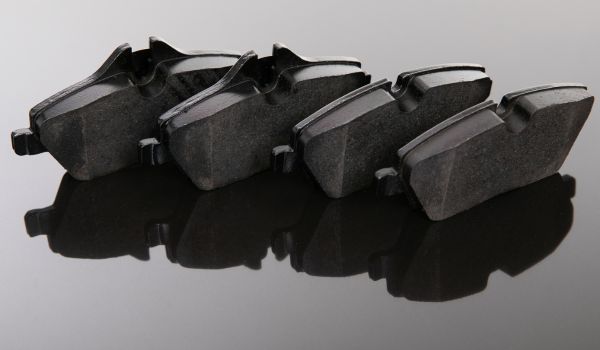If your parking brake stops working, you can’t move. This annoying problem affects more cars than you might think, and the our Parking Brake is Stuck, leaving you stuck.
Don’t worry, though. There are clear reasons Your Parking Brake is Stuck. In case it ever happens to you, learn what makes parking brakes freeze up and how to stop them manually.
What kind of brake is this?
A parking brake is an extra feature that can stop a car from moving forward or backward. Even when the main hydraulic brakes are not in use.
The main way that a parking brake, or “e-brake” works is through mechanical force. This gets rid of the need for electricity or hydraulics.
For the most part, cable-actuate parking brakes. Depending on the car, they work by pressing down on a special pedal or moving a handbrake lever. In this kind of application, when you pull the parking brake, it puts pressure on a tensioning device.
Taking your foot off of the parking brake pedal or lowering the handbrake lever back to its neutral position will relieve pressure on this brake system. The emergency brakes will drag if you don’t do this before moving away, which can have very bad results.
Why a Parking Brake Gets Stuck
There are a number of situations in which a car’s parking brake can get stuck. And all of them can be very annoying at the time. Here are some of the most common reasons why the parking brake gets stuck.
1: Rust
Most of the time, corrosion is to blame for a stuck parking brake. The wire, mechanism, or linkage that controls a car’s parking brake can rust over time, making it useless.
Most of the time, this happens to cars that spend a lot of time in northern regions. Where road salt is used all the time. If you use your car’s parking brake sparingly, these problems will get better.
2: Frosty Weather
Cold weather cause Many brake problems. Many northern countries have conditions where a car’s parking brake can actually freeze in place. If it is left in place overnight or for a long time.
A car’s handbrake is more likely to freeze if you drive in wet weather right before parking with the emergency brake on. In this case, you need to figure out how to thaw your frozen brake connection before going any further.
3: Strict Application
You can really jam your parking brake if you use too much force when setting it, whether you’re using a foot pedal or a hand lever.
To use the parking brake safely, you only need to use mild force. Any amount above this can stretch a car’s parking brake wire or bind the terminal linkage of a parking brake, both of which can be annoying.
4: A brake caliper that doesn’t work
The parking brake system is links to the back brakes of a car and has a device that can apply and remove the brakes. When the brake caliper sticks or doesn’t let go properly, it can make the parking brake stick.
A stopped or stuck caliper piston could be the exact cause. It is the job of the caliper piston to put pressure on the brake pads. The brake pads then put pressure on the rotor, which slows or stops the car. If the piston gets stuck. It might not fully release the brake pads. This means that the pads will stay in contact with the wheel even when you do not apply the parking brakes.
It’s also possible that the caliper move pin is broken. It is the slide pin’s job to let the caliper move easily and evenly press down on the brake pads. If the slide pin is broken or not properly oiled, the caliper could get stuck, which would stop the parking brake from releasing all the way.
5: Wheel Cylinder Not Working Right
This happens if you have drum brakes on your car. And the emergency stop gets stuck on the back wheel, like the above picture of a brake cylinder that won’t move. It’s not the caliper that won’t come off the brake rotor, though. It’s the wheel cylinder that comes off the brake shoe.
What if your emergency brake gets stuck? Can you still drive?
It is never a good idea to drive with a stuck parking brake. This is because the brake pad or shoe that is giving you trouble will keep dragging across its brake wheel or drum.
Within seconds, this constant friction will start to build up heat, and there is even a chance of a fire. Many times, there will be a burning smell and even some smoke when the parking brake is stuck.
If you try to drive with the parking brake stuck, you could also do a lot of damage to the brake gear. Besides that, too much heat buildup at the wheel ends, like that caused by a stuck parking brake, can hurt the hub and axle seals and even speed up failure in the worst cases.
No matter what, a stuck parking brake is a major problem that needs to be fixed right away. Please do not try to fix your car’s parking brake problems yourself. Instead, call a tow truck and make an appointment for repair at a qualified service center.
Can I manually release the parking brake?
In some situations, a stuck parking brake can be manually released to allow the car to be used again. In order to do that, though, one must understand how their car’s parking brake works and what is causing their parking brake to stop working.
Newer cars with electronic parking brakes, on the other hand, often can’t be disengaged by hand because, unlike mechanical parking brakes, the computer runs the system.
The next part shows you how to release a normal parking brake manually.
How to get an emergency brake that is stuck to move
If you find that your car’s parking brake has become stuck, you must use heat to loosen it up.
Most of the time, letting your car idle for a long time will build enough exhaust heat to fix the problem. But you can speed up the process by using a hand-held propane torch to send a little heat in the right direction.
If rust is the cause of problems with the parking brake, applying the hydraulic brakes over and over again can often fix the problem. But technical help might be needed to get things going again.
In some situations, spraying a vehicle’s brake line with several well-placed drops of white lithium grease or penetrating oil and then applying pressure to it can help.
In the worst situations, someone might have to try to disengage their car’s e-brake by hand. To do this, you usually have to manually tighten the parking brake cable on a car, either where two sections of the cable meet or where the parking brake itself meets its matching linkage.
The wire pulls out of its retainer while in place with vice-grips.
When to Get Help from a Professional
No matter how good you are at do-it-yourself repairs, sometimes you need the help of a professional to figure out what’s wrong and fix a stuck parking brake.
If you’ve tried things like warming up the engine to melt the ice or tapping the wheel gently, but the parking brake still won’t move, it’s time to call a tow truck. Do not risk damaging your car by trying to force it; it is safer to get a tow to a nearby shop.
Types of Parking Brakes
On the roads today, there are a number of different types of parking brakes in use. Different types of parking brakes come with varying models of cars and from other manufacturers.
There are a few main types of parking brakes.
Parking Brake Shaped Like a Drum
When a car has drum brakes, it uses a special cable-driven lever to connect the brake shoes and press them against the inner diameter of the brake drum.
This happens even though the wheel cylinder of the system is not in use. Which is what usually happens when hydraulic brakes are used.
Hybrid Parking Brake with Disc and Drum
Many cars with four-wheel disc brakes now have a separate parking brake assembly. Which looks like a drum and is mounted inside the hat of the back brake rotor. This cable-driven assembly works the same way that standard drum brake-equipped cars do.
When you tight the parking brake cable, brake shoes placed inside the rotor’s hat touch the inside of the hat, which means there is friction.
Modified Disc Parking Brake
Some newer cars with 4-wheel disc brakes have a modified disc brake design that uses the vehicle’s back calipers as the source device.
This type of parking brake works by moving a cable-driven lever, which pushes the brake piston outward in a caliper. This goes against the purpose of a service brake, which is to help with power transfer through hydraulics.
Electronic Brake for Parking
The parking brakes on some cars have started to be controlled automatically in the past few years. This electronic system is built into the back brake calipers of a vehicle.
When you press button or switch, an electric motor pushes the piston of a brake caliper outward. This makes the brake pads touch the rotor.







